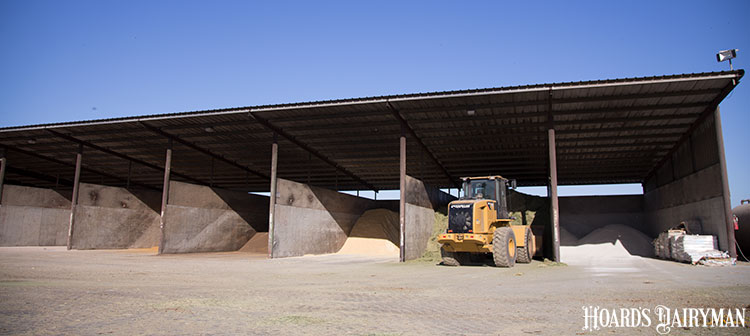
Growers versus buyers
The national look at feed costs masks an important story that has unfolded the past few years between dairy producers who grow their own feed versus those who purchase a majority of their feed needs. ERS provides regional feed cost information that highlights the difference between purchased and homegrown feed costs.
In the ERS Fruitful Rim region, which includes California, 2016 feed costs remained $5.45 per cwt. above the 2010 level and are only $1.49 per cwt. lower than 2013. In this ERS-defined region, 84 percent of feed costs are purchased feeds.
In contrast, the ERS Northern Crescent region, which includes Wisconsin, reported 2016 feed costs to be $3.94 per cwt. above the 2010 figure and $3.88 per cwt. lower than the 2013 level. Purchased feed expenses are only 53 percent of total feed costs in the Northern Crescent region.
The recent milk production report shows declines in milk production in California and Idaho, states that are included in the ERS Fruitful Rim region. Meanwhile, Wisconsin and Michigan, states that are included in the Northern Crescent region, reported growing milk production. This change in milk production growth relative to historical growth trends might highlight that the larger decline in feed costs reported in the Northern Crescent region has had some influence on milk supplies. Although ERS has not yet provided 2017 feed cost estimates, they will likely remain near the 2016 levels.
Feed and the farm bill
As the farm bill debate is unfolding, the role of feed costs in the MPP margin should not be overlooked. The 2016 annual average feed cost tallied $8.07 per cwt., virtually unchanged from the 2010 annual average. The MPP annual average feed cost level fell by $4.78 per cwt. over the 2013 to 2016 period.
The change in the MPP feed cost relative to the change in ERS reported feed costs over the 2010 to 2016 period provides ample reason for further exploration of a future MPP feed cost component. While the difference between purchased and homegrown feed costs is one factor affecting regional differences in ERS cost of production estimates, that factor alone does not explain all of the differences between ERS feed costs and the calculated MPP feed costs.








